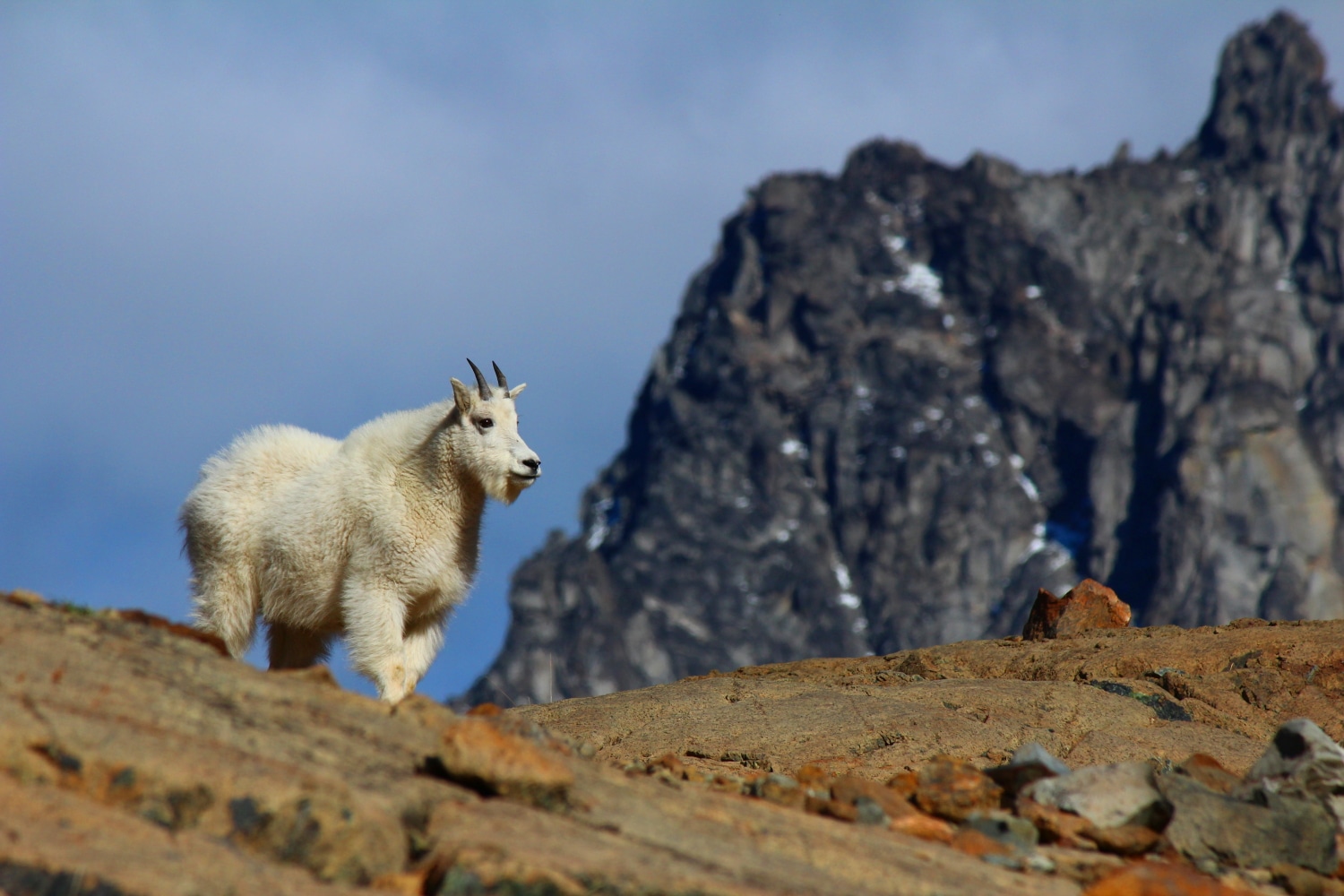After roaming Washington’s Olympic Peninsula for nearly 100 years, mountain goats will soon be absent from the area. In June, the National Park Service’s plan to remove mountain goats from the Olympic Peninsula was approved, concluding a multiyear process of environmental impact analysis and public comment. The National Park Service (NPS) plans to begin capturing goats on September 10, transferring them to sites within the North and Central Cascades.
Though the animals will only be moved about 100 miles from the Olympics as the crow flies, the Cascades are a world apart in many other ways, especially when it comes to mountain goats. The development—and the discussion that has sprung up around it—is the latest chapter in a long history of wildlife management in national parks in the United States.
History of Goats in the Olympics
The story of mountain goats in the Olympic Mountains begins nearly 100 years ago, when a dozen goats from Alaska and British Columbia were released on the Olympic Peninsula by hunting interests. Just over a decade later, Olympic National Park was formed, which today covers nearly one million acres and three distinct ecosystems across the peninsula. Due to its remote location and topography, the park is home to many species found nowhere else, such as Olympic marmots, which feed on some of the same vegetation as the goats. “[The goats] moved into this island of mountains that had been wide open with a lot of vegetation and no predators that were really geared toward preying on the them because they hadn’t been there before,” explained Patti Happe, wildlife branch chief at Olympic National Park. Around the same time, state and federal agencies were conducting ongoing predator control efforts, which meant that what predators did exist—wolves, cougars and bears—were being systematically exterminated.
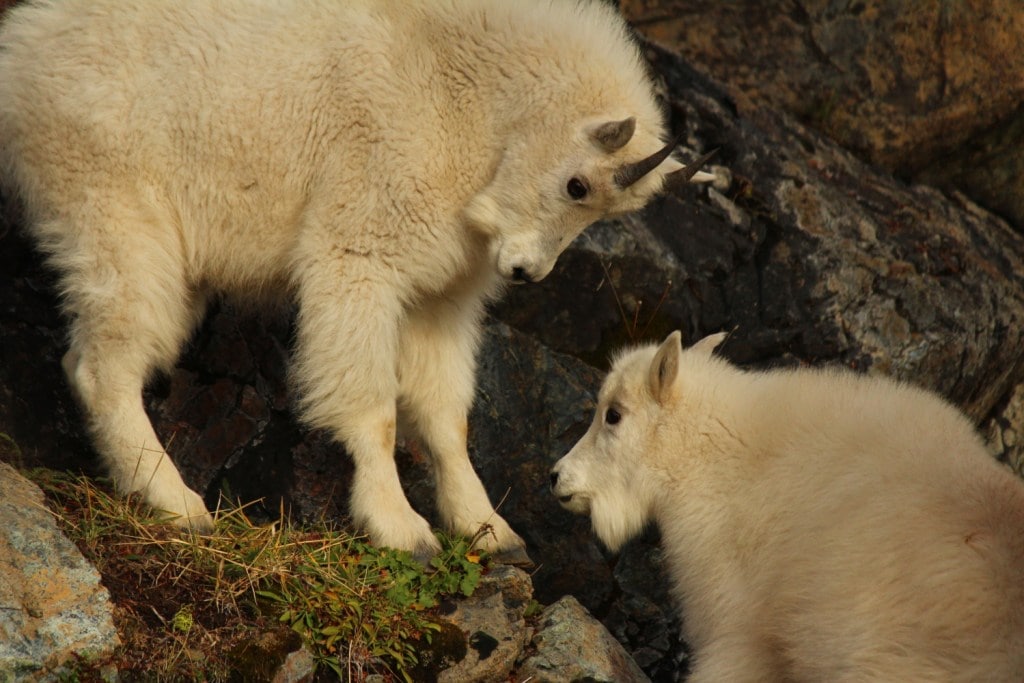
Mountain goats in their native Cascade Range. (Photo Credit: Gemina Garland-Lewis)
As a result, the goat population grew and expanded across the range. Over time, as the goats trampled and wallowed in native vegetation and began to compete with native species like the Olympic marmot for food, their impacts became apparent. Park biologists in the 1970s were the first to express concerns about the effect of mountain goats on the Olympic Peninsula, according to Happe. These concerns led to research into the issue in the 1980s, which resulted in a removal and transfer effort from 1983 to 1989, in which the NPS was able to catch about half of the goats. While these efforts helped, over time the goat population rebounded (a 2004 survey suggested the goat population was increasing by 8 percent each year). At the same time as goats were expanding within the Olympics, they were simultaneously being over-hunted in the Cascades—their native range—which left small and fragmented populations in need of recovery.
Land managers say the goal of the new mountain goat management plan is not only to remove an invasive species from one park, but to also help struggling native populations to recover in another region. “If you stand back and take the bird’s-eye view, the mountain systems look similar,” Happe says. “But as you get closer, they’re actually very, very different—especially if you know about geology and you know about the vegetation you’re seeing. The Cascades vegetation—the plants there, the ecosystem there—evolved with mountain goats and mountain goat herbivory. The Olympics did not.”
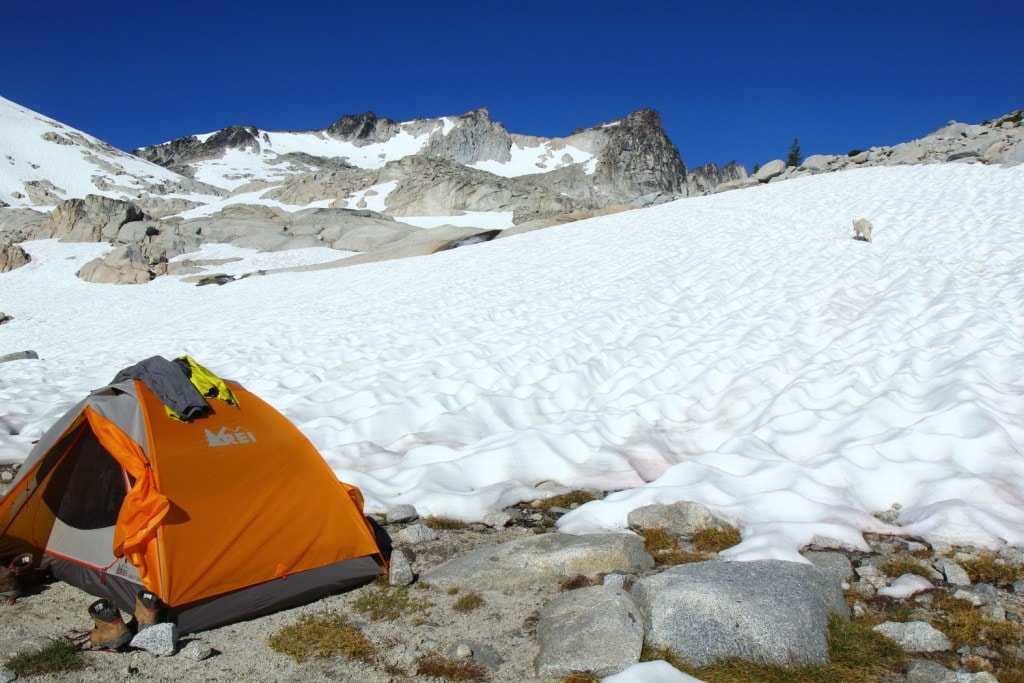
A mountain goat wanders past a backcountry campsite in the Cascade Range. (Photo Credit: Gemina Garland-Lewis)
Getting Our Goats
A 2016 survey puts the number of mountain goats in the Olympic Mountains at 625, and the population is expected to grow by 100 this year. By 2023, park officials warn, the population size could rival 1980 levels, with nearly 1,000 mountain goats living in the Olympics. In response, the park service will roll out the new plan over three to five years, with two 12-day capture periods per season (with the exception of the 2018 season, which will have one capture period from September 10 to 21 with trail closures beginning September 5). Goats will be captured and transferred via helicopter to one of two staging areas within the park, either at Hurricane Hill or in the southeast portion of the park near Mt. Ellinor, where biologists will collect data and samples from the goats. The next morning, the goats will be loaded on refrigerated trucks to another staging area in the Cascades, where they will then be transferred into the backcountry release sites via helicopter. Per Happe, goats that have become accustomed to humans in the Olympics will be moved to areas that aren’t close to recreation areas, and aggressive goats will be removed lethally.
In a departure from the removal strategy employed by the park in the 1980s, goats that cannot be live captured will be killed. “We know from past experience capturing mountain goats in Olympic National Park that there is just some portion of the population that’s going to be uncatchable,” explains Happe, noting the animals’ experience with helicopters, humans and the safety of the terrain for capture. With this in mind—and a goal to truly rid the area of this invasive species—teams will remove as many animals as possible through live capture, which Happe estimates to be about 50 percent of the population, before beginning to kill the remaining goats.
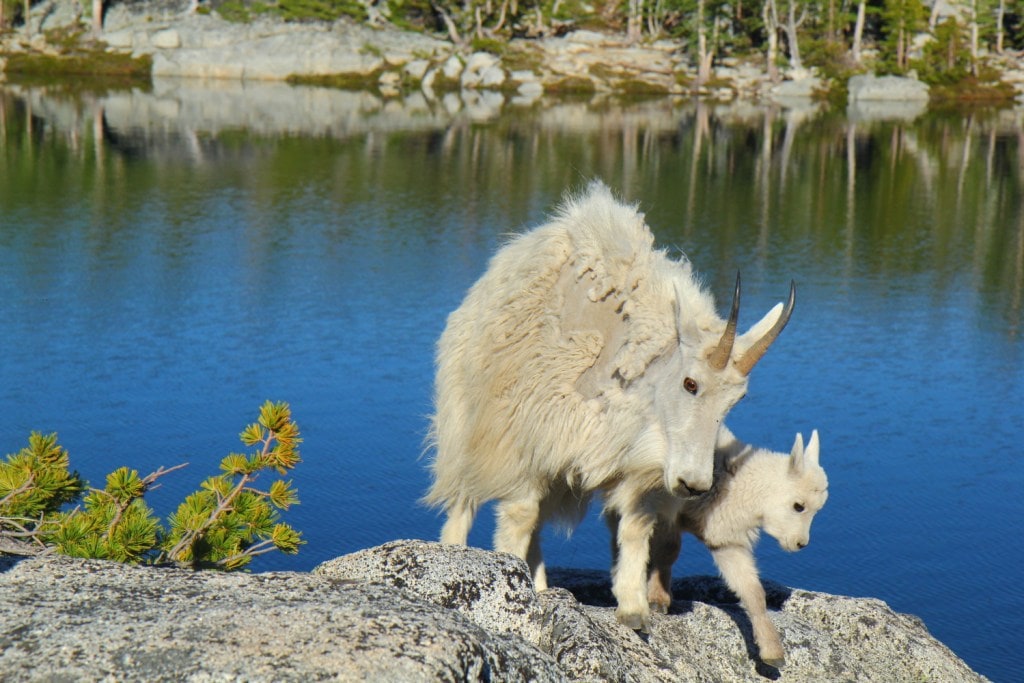
Mountain goats in the Cascades; land managers say that the reintroduction of goats to the Central and North Cascades should help the struggling population to recover. (Photo Credit: Gemina Garland-Lewis)
There will be some closures to both front-country and backcountry sites at Olympic National Park during operations, including the staging areas and regions where there is a lot of goat activity. “The only trail closures that we anticipate in the park are the few areas where we have both high numbers of goats and high numbers of people,” explains Happe. “We don’t want to put people at risk.” There are no anticipated closures in the Cascades.
Seeing the Forest for the Trees
A public comment period was held during the summer of 2017, during which the NPS received approximately 2,300 responses to the proposed plan. Happe says that all substantive comments received replies, and that tweaks were made to the plan based on suggestions the NPS received from the public. While many supported the plan, strong pushback came from wilderness advocates who did not want to see helicopters in areas where they’re normally not allowed. Others hoped the process could be completed without lethal removal.
Rob Smith, director of the National Parks Conservation Association’s (NPCA) Northwest Regional office, asks people to consider the short-term disruption versus the long-term benefit to the wilderness: “If a non-native species like the goat, in the numbers they have, continue to cause soil erosion while they build their wallows, remove rare and endangered plants, and compete with native species like the Olympic marmot, you don’t have a sustainable long-term wilderness value. You’re slowly letting that wilderness and that ecosystem degrade,” Smith says. “The national parks have been described as being in the ‘forever business’—we have to look at the long-term. And that means you may need to make some short-term adjustments here in order to set things right.”
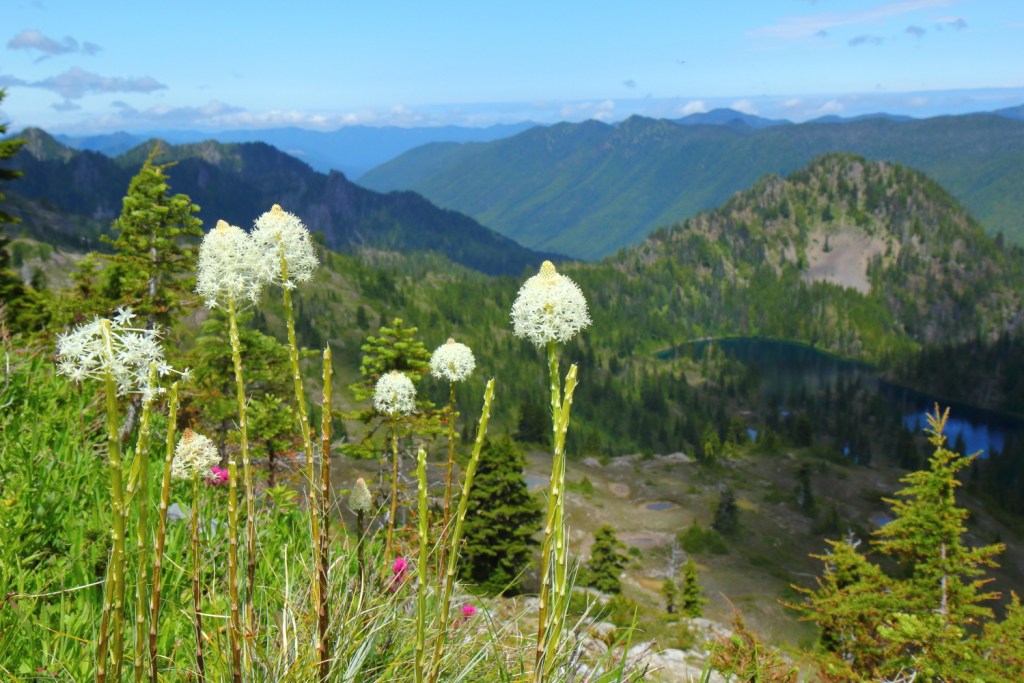
The High Divide – Seven Lakes Basin region in Olympic National Park, where recreationists and mountain goats interface. (Photo Credit: Gemina Garland-Lewis)
What Smith describes plays into the larger conversation about wildlife management in national parks. “You have an existential question, which is: To what extent do humans intervene in wilderness? And, what is wilderness? And what provides wilderness experience? And these are difficult questions that people have a lot of opinions on,” says David Lamfrom, director of NPCA’s National Wildlife Program. Since the National Park Service was formed in 1916, prevailing park management policies have varied from no intervention to significant intervention. This has been complicated, in part, by our national parks’ mandate to serve as both nature reserves and outdoor recreation destinations for the enjoyment of the public. “One of the problems of studying nature,” writes author Jordan Fisher Smith in his book Engineering Eden, which chronicles the history of wildlife and resources management in the United States’ national parks, “is that other than a fragmentary historical and paleontological record, we have only the present world, used hard by our forebears, on which to base our deductions of how nature works; and, by extension, how it is supposed to work.”
“You have an existential question, which is: To what extent do humans intervene in wilderness?” – David Lamfrom, NPCA
(A note for curious readers: Starker Leopold’s Wildlife Management in the National Parks, known more commonly as The Leopold Report, has played an influential role in how national parks have handled wildlife management since its publication in 1963. An updated Revisiting Leopold: Resource Stewardship in the National Parks was published in 2012 and tackles resource management in the national parks in the context of current advances in scientific discovery, technology and new environmental threats).
Successful Tinkering
Removing mountain goats from the Olympic Peninsula can be better understood in the historical context of other interventions in our national parks. Aldo Leopold, Starker’s father and an influential American conservationist (often considered the father of wildlife ecology and the United States’ wilderness system), proposed the idea of “intelligent tinkering,” which encouraged conservationists to keep “every cog and wheel” of an ecosystem in place to the best of their abilities. Decades before Leopold first described this concept, one of the largest impacts across ecosystems around the country was the practice of large-scale predator removal in the late 1800s by state and federal agencies—a purposeful extermination meant to reduce predation on livestock and wildlife prey species. Supported by early conservationists and ranchers, large-scale predator removal practices were so widespread that even Yellowstone, America’s first national park, wasn’t immune. According to the National Park Service, between 1914 and 1926 alone, at least 136 wolves were killed in the park. By 1926, more than three decades after Yellowstone was founded, the park’s last wolves were killed.
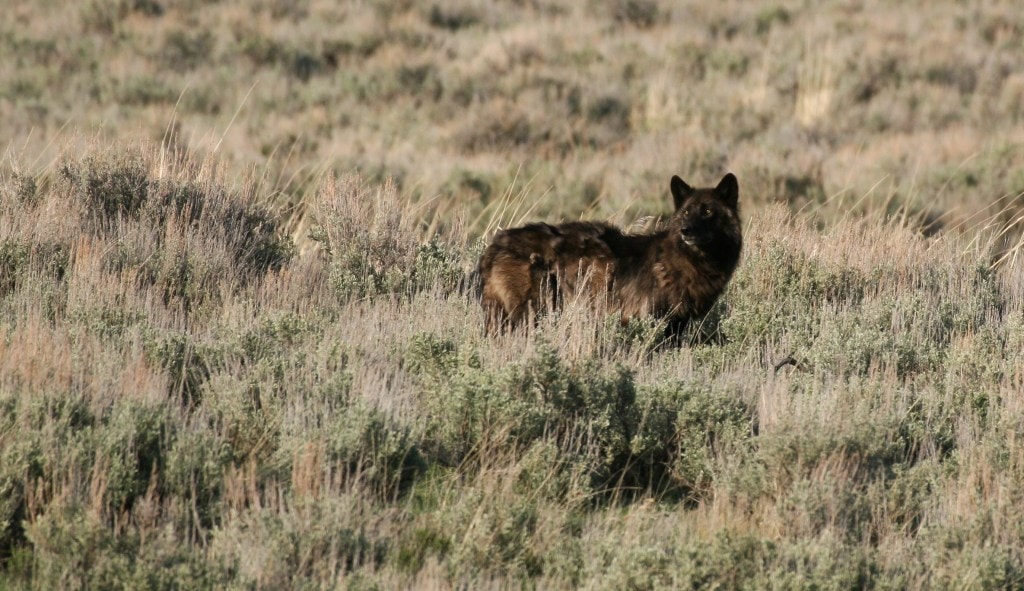
A wolf surveys the landscape in Yellowstone National Park. Photo courtesy of David Lamfrom, NPCA.
With wolves absent, Yellowstone’s elk population skyrocketed and, over the decades that followed, one of the earliest and biggest conversations about wildlife management in national parks unfurled—should the NPS actively reduce the herd? Or, should it leave nature alone? The growing elk population was having visible impacts on the plants and animals in the park; some areas became almost entirely stripped of vegetation and, as a result, populations of animals like songbirds and beavers that depend on the vegetation began to decline.
Following decades of culling the elk population through hunting, the prevailing ideology shifted to one of “natural control,” in which park authorities halted their active management practices and became entirely hands-off. Supporters believed that, as sources of food for the elk population became scarce in Yellowstone, the elk would begin to decline—all that was necessary was for land managers to step back and let nature take its course.
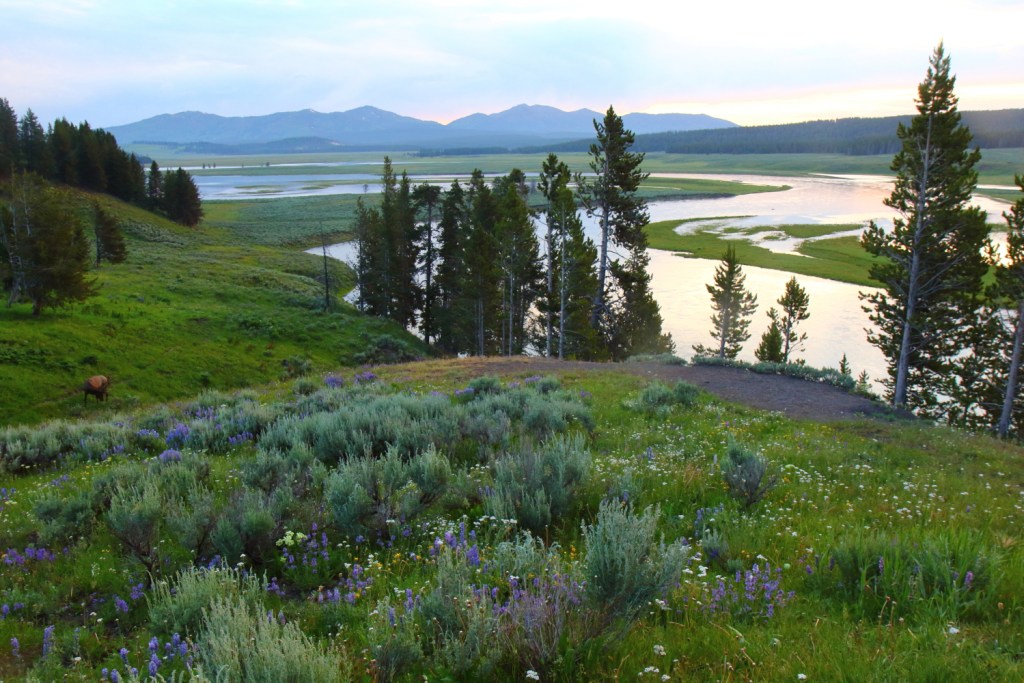
An elk grazes in the early morning light in Hayden Valley, Yellowstone National Park. (Photo Credit: Gemina Garland-Lewis)
Over time, with scientific advances in the field of ecology and the release of The Leopold Report, which advocated for a departure from “natural control” back to more active management practices, perspectives on predators began to shift. Even so, it took until the final months of 1994 for wolves to be reintroduced to their historic range in Yellowstone, starting with 31 animals captured from Alberta and moved to three locations in the park’s Northern Range. Sixteen more animals were brought in two years later. The success of this endeavor didn’t end with the wolves—by 2001, with wolves helping to control elk populations, willows, aspens and narrowleaf cottonwoods began reappearing. The comeback of the willows led to increased abundance and diversity of songbirds and the return of beavers to the ecosystem. The previously booming coyote population decreased, which allowed the pronghorn population to recover. Even grizzlies—endangered and struggling with decades of mismanagement in the park—got a boost from the wolves, whose kills provided carrion for the bears.
Looking Forward
Yellowstone may have been the first park to grapple with issues surrounding wildlife and resources management, but it is far from the last. The upcoming mountain goat removal and translocation plan is just one of many programs in national parks that strive to maintain and protect wildlife in these environments. Other ongoing wildlife management cases include the removal of invasive reptiles from the Everglades and the vaccination of prairie dogs in the Badlands to combat the spread of sylvatic plague among black-footed ferrets.
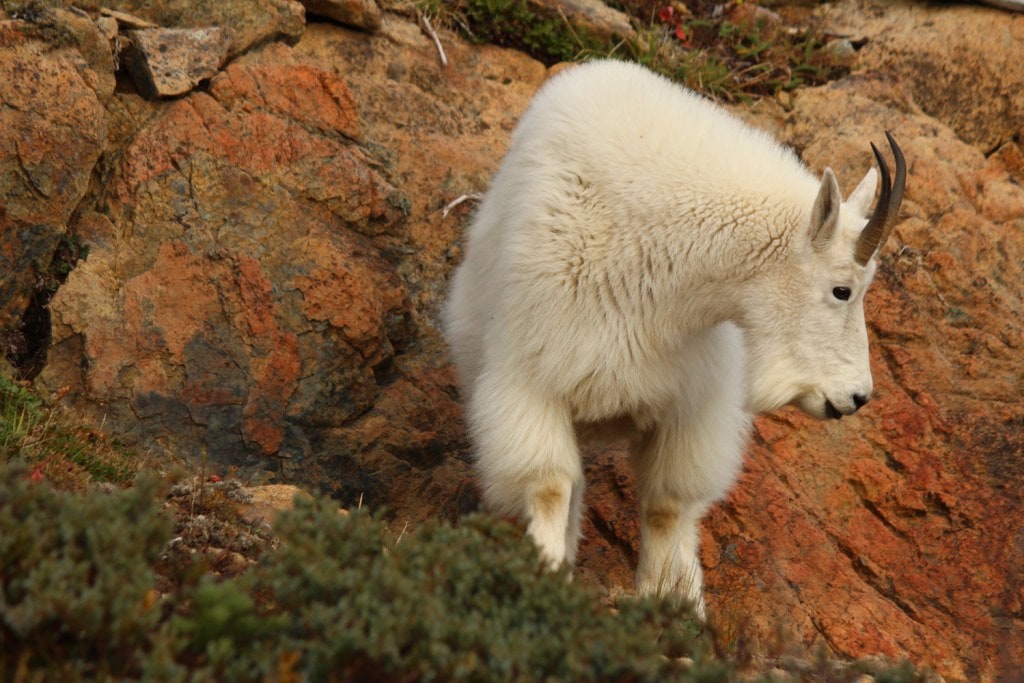
A mountain goat wanders among the rocks in the Cascade Range. (Photo Credit: Gemina Garland-Lewis)
Over time, much has been learned from these early conversations and different management strategies, leading to the current perspective that—as in the case of reintroducing wolves to Yellowstone—some level of intervention is a necessary part of the puzzle. “Parks are not isolated,” says Happe. “We’re in the context of the larger landscape with larger forces that really affect the way natural ecosystems function, and if we’re going to protect these great natural laboratories for future generations we have to do some level of intervention. And it’s a hard job figuring out what’s appropriate, but we’re doing the best we can.”
